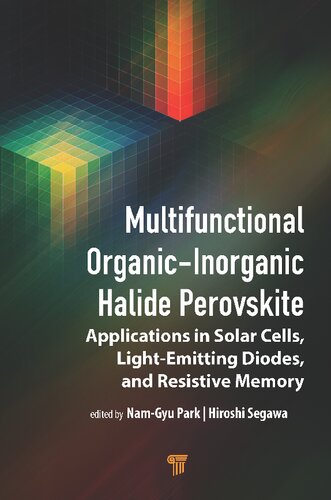

Most ebook files are in PDF format, so you can easily read them using various software such as Foxit Reader or directly on the Google Chrome browser.
Some ebook files are released by publishers in other formats such as .awz, .mobi, .epub, .fb2, etc. You may need to install specific software to read these formats on mobile/PC, such as Calibre.
Please read the tutorial at this link: https://ebookbell.com/faq
We offer FREE conversion to the popular formats you request; however, this may take some time. Therefore, right after payment, please email us, and we will try to provide the service as quickly as possible.
For some exceptional file formats or broken links (if any), please refrain from opening any disputes. Instead, email us first, and we will try to assist within a maximum of 6 hours.
EbookBell Team

5.0
70 reviewsPerovskite is a well-known structure with the chemical formula ABX3, where A and B are cations coordinated with 12 and 6 anions, respectively, and X is an anion. When a halogen anion is used, the monovalent A and divalent B cations can be stabilized with respect to a tolerance factor ranging from 0.8 to 1. Since the first report on 10% efficiency and long-term stability of solid-state perovskite solar cells (PSCs) in 2012 and two subsequent seed reports on perovskite-sensitized solar cells in 2009 and 2011, PSCs have received increasing attention. The power conversion efficiency of PSCs was certified to be more than 25% in 2020, surpassing thin-film solar cell technologies. Methylammonium or formamidinium organic ion-based lead iodide perovskite has been used for high-efficiency PSCs. The first report on solid-state PSCs triggered perovskite photovoltaics, leading to more than 23,000 publications as of October 2021. In addition, halide perovskite has shown excellent performance when applied to light-emitting diodes (LEDs), photodetectors, and resistive memory, indicating that halide perovskite is multifunctional.
This book explains the electro-optical and ferroelectric properties of perovskite and details the recent progress in scalable and tandem PSCs as well as perovskite LEDs and resistive memory. It is a useful textbook and self-help study guide for advanced undergraduate- and graduate-level students of materials science and engineering, chemistry, chemical engineering, and nanotechnology; for researchers in photovoltaics, LEDs, resistive memory, and perovskite-related opto-electronics; and for general readers who wish to gain knowledge about halide perovskite.